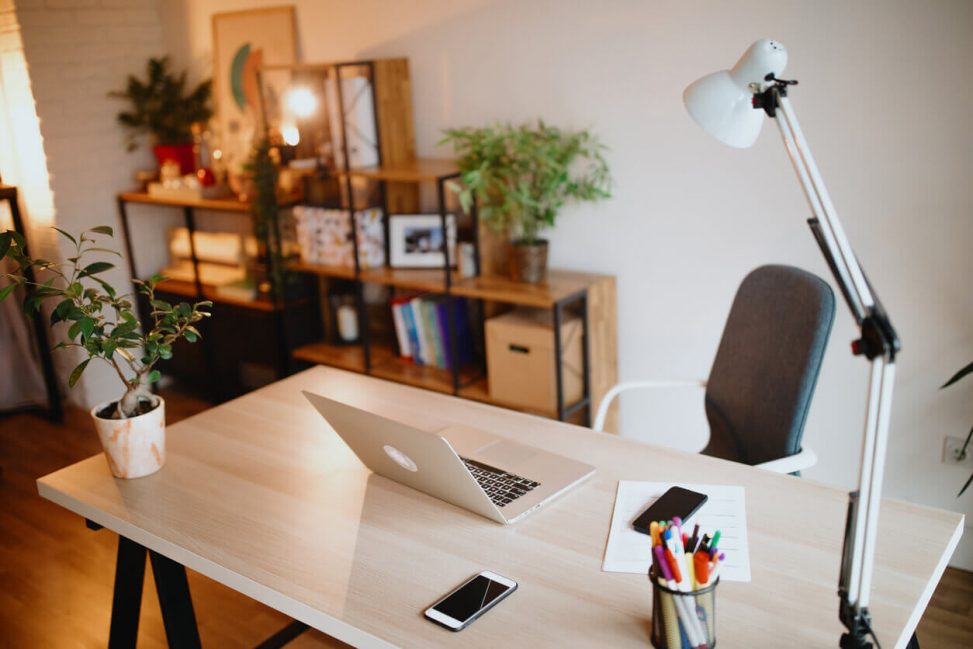
The increased popularity of teleworking is promoting the growth of the flex office. Although often criticised in the past for depersonalising workspaces, and being motivated only by the
Saving of money through the reduction of office space, the flex office is now enjoying a renewed appeal. By offering friendly spaces, conducive to creative interactions and well-being at work, it is helping to reshape the relationship between work and corporate culture.
Long before Covid-19, the flex office was already attracting attention. In 2018, a study by Savills and Workthere concerning the European panorama of flexible office reported a significant increase in the percentage of flex office requests, compared to the global corporate real estate demand. It already reached 9.9% of enquiries, i.e. 3 times more than 3 years earlier, occupying 830,000 m² of offices across Europe. Although it predictably mostly concerns large cities such as Paris, London and Berlin, other “secondary” European cities are also experiencing a significant enthusiasm for this new mode of management. Consequently, in Stockholm or Brussels, nearly 25% of the enquiries made are now for co-working spaces.
How is the flex office organised in practice?
The flex office can consist of the sharing of an office, depending on the days of the week, between two employees working as a pair. It can also take the form of a completely free space where no workstation is assigned.
It is also possible to opt for a halfway solution, with open spaces without allocated space, but dedicated to each of the company’s departments, allowing both the preservation of reference points and constructive interaction for each specialty.
Hybrid formulas combining workspace and relaxation areas can also be made available to employees in order to maintain team cohesion. Lastly, other spaces can also be planned to optimise the concentration of teams if the undifferentiated open space becomes too cumbersome. This is the case for:
- “Phone-booth spaces” (rooms dedicated to calls);
- “Meeting-boxes” where employees can have meetings with an optimal acoustic comfort;
- “Focus rooms” allowing a more private setting if employees need maximum concentration.
This redefinition of space will depend both on the flexibility possibilities offered by your line of business, on your goals, and on your teams’ feelings about their adaptability to a less sedentary workspace.
Lower costs for businesses
For businesses, the main advantage of the flex office is often to reduce the costs associated with office space. Fewer designated offices equals less space required. Even though it relies on nomadism and teleworking, the flex office is also part of a long-term development. The individual space available in large companies has thus fallen from 40 m2 in 1980 to… more or less 15 m2 today1.
According to several studies carried out before Covid-19, at least 50% of employees said that they did not need a personal office, provided they had all the necessary equipment to be able to work efficiently2.
The flex office, inseparable from teleworking
The success of teleworking following the Covid-19 crisis is now speeding things up. Since the vast majority of employees (81%) wish to continue teleworking one to several days3 a week, it truly raises the question over maintaining a personal workstation in company premises. Why reserve a personal workspace for everyone if it remains empty part of the time?
The need for essential support from employees
The flex office is often criticised for causing a depersonalisation of space, or even creating additional stress due to the loss of daily habits that it entails. But the flexibility allowed by teleworking avoids falling into this pitfall. What could be more personal and routine-like than one’s own home? As soon as it becomes possible to work there regularly and to easily alternate remote and in-person work, everyone will be able to maintain their habits, cultivate a real quality of life at work, and retain the feeling of being in control of their own working environment.
Some like the socialisation of the office; others the calm of remote work; most appreciate being able to switch from one to the other. The freedom to choose your place of work is undoubtedly a powerful factor of autonomy. It also gives one a very strong sense of control. And, as Gaëtan de Lavilléon, doctor of neuroscience, emphasises, the sense of control is “associated with greater job satisfaction in general and, ultimately, better performance“4.
To gain the support of all employees, it is therefore essential that the flex office does not go against this need for control. Otherwise, you might as well stay at home! This is why it may also be wise to involve employees in the design of workspaces. This is, for example, the choice made by Airbnb for its American headquarters in Portland.
Finally, to avoid fuelling the frustrations associated with the loss of an individual office, it is essential that everyone feels that the flex office offers a new opportunity to connect with others within the company. From this point of view, the flex office must be seen not only as a workspace, but also as a place of conviviality, conducive to creative interactions, and where everyone enjoys going and meeting up.
Make the flex office a collaborative hub
This is, for example, the model advocated by Peugeot. Last spring, the French car manufacturer announced that on-site presence would now be mandatory only… 1.5 days per week. 40,000 employees worldwide were affected. The challenge here was to make each in-person encounter a rich and productive moment. “As HRD, if I have a work meeting in the physical presence of my teams, I will ask them not to open their laptop or check their phone. It is essential that we are focused on this session of creativity, interaction, and decision making that we have to do together“, says Xavier Chéreau, HRD of PSA, in this regard5. In this way, the flex office tends to turn office spaces into collaborative hubs, mostly dedicated to meeting and consultation rather than production. Conversely, individual work is carried out quietly and remotely, at home, in another location, or in a co-working space.
Flexibility, a new corporate culture
The flex office thus signs the death of presenteeism. The important thing is no longer to observe the hours of presence in the office, but to meet the deadlines. Everyone is then freer to organise themselves as they wish, as long as they do not compromise teamwork, and do not harm the quality of the final result.
New services are emerging to support companies in this cultural change. This is the case, for example, of the Moffi application, which lets each user know which workspace is free and which is occupied. Users can also indicate on a daily basis whether they plan to go to the company premises or telework. If necessary, it is also possible to geolocate nearby co-working spaces. Managers can see in one click how many people are teleworking and how many are present on the company’s premises.
The flex office is also reinventing the role of managers. A true facilitator, they become more than ever the person capable of uniting teams around a common objective, setting clear horizons and precise deadlines, as well as fostering the social bond needed to maintain the group cohesion alive, and to encourage trust among its members. In short, their charisma must make them the keystone of flexibility.
The flex office at a time of the health crisis
Finally, the flex office, beyond its many advantages, is still facing the challenge of the health crisis. With undifferentiated traffic and unallocated workstations, the mixing of people thus takes place on a massive scale within companies, all the more increasing the risks of contamination. It is therefore important to comply with strict protocols, including:
- Strict compliance with preventive measures and social distancing;
- Use of a day or half-day space reservation system to limit intermingling;
- Use of personal non-shared equipment (keyboard, mouse, laptops, headsets);
- Cleaning of the workspace before and after use.
All of these procedures, combined with the gradual familiarisation of employees with this concept, will ensure a bright future for the flex office which will redefine the approach to the work environment for a long time.


Leave a Reply
You must be logged in to post a comment.